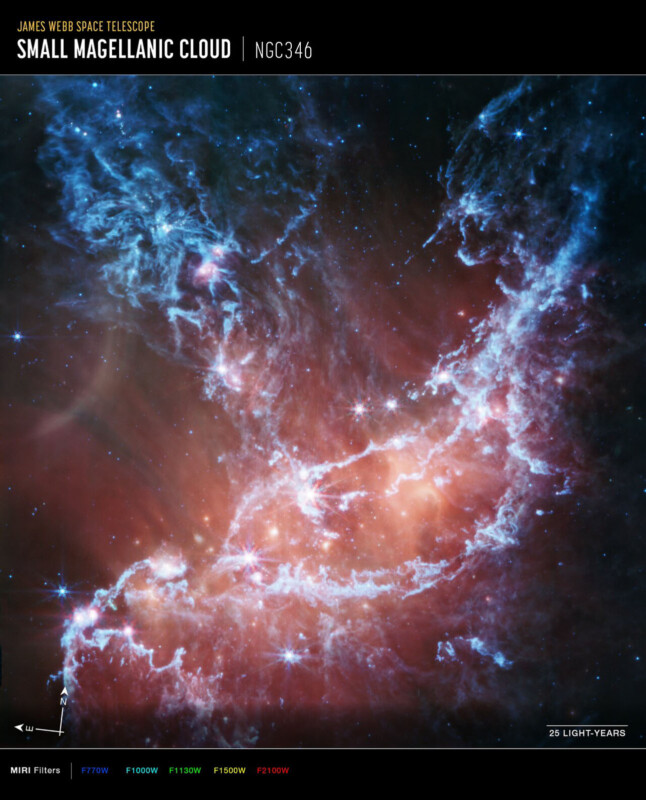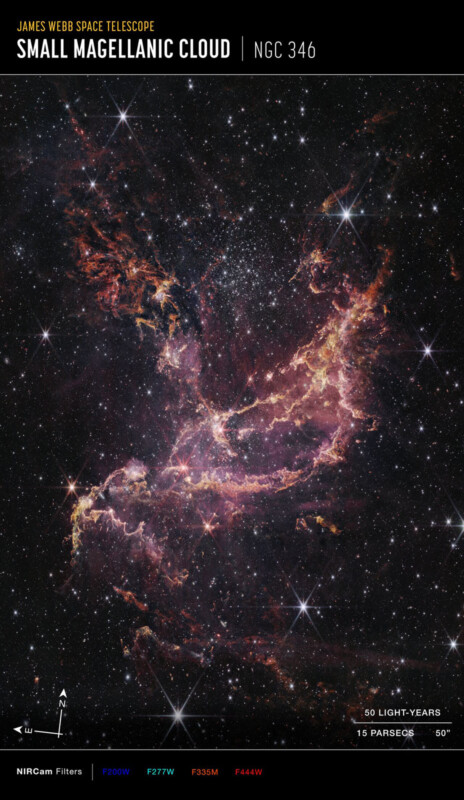Webb Space Telescope Captures Ethereal View of a Stellar Nursery
![]()
Among the James Webb Space Telescope’s many scientific objectives are providing astronomers and physicists unprecedented looks at areas where stars are being born. These stellar nurseries are not only of great scientific importance, but they are also visually spectacular.
Webb’s latest target is NGC 346, a young star cluster in the Small Magellanic Cloud (SMC). Located about 210,000 light-years from Earth in the Tucana constellation, NGC 346 was discovered in 1826 by Scottish astronomer James Dunlop.
Using its Mid-Infrared Instrument (MIRI), Webb showed considerable cosmic dust, formed of elements like silicon and oxygen, in the SMC. Scientists went into Webb’s observations, including one using the Near-Infrared Camera (NIRCam) earlier this year, expecting to find little dust.

The new MIRI image, which features representative color, shows blue tendrils that trace emission from material such as dusty silicates and “sooty chemical molecules” known as polycyclic aromatic hydrocarbons (PAHs).
“More diffuse red emission shines from warm dust heated by the brightest and most massive stars in the heart of the region. An arc at the center-left may be a reflection of light from the star near the arc’s center (similar, fainter arcs appear associated with stars at lower left and upper right). Lastly, bright patches and filaments mark areas with abundant numbers of protostars,” writes the European Space Agency (ESA).

Researchers have been able to locate 1,001 pinpoint sources of light in the image, “most of them young stars still embedded in their dusty cocoons.” Performing this stellar census required combining Webb data in near-infrared and mid-infrared wavelengths.
“The results have implications for our understanding of galaxies that existed billions of years ago, during an era in the universe known as ‘cosmic noon,’ when star formation was at its peak and heavy element concentrations were lower, as seen in the SMC,” ESA explains.
The video above compares images of NGC 346 captured in visible light by the Hubble Space Telescope’s Advanced Camera for Surveys, Webb’s NIRCam instrument, and Webb’s MIRI instrument. The visible light image shows thousands of blue stars and blue-colored hydrogen and oxygen gas. In contrast, Webb’s photos are more colorful, with pink representing energized hydrogen and orange showing areas of molecular hydrogen.